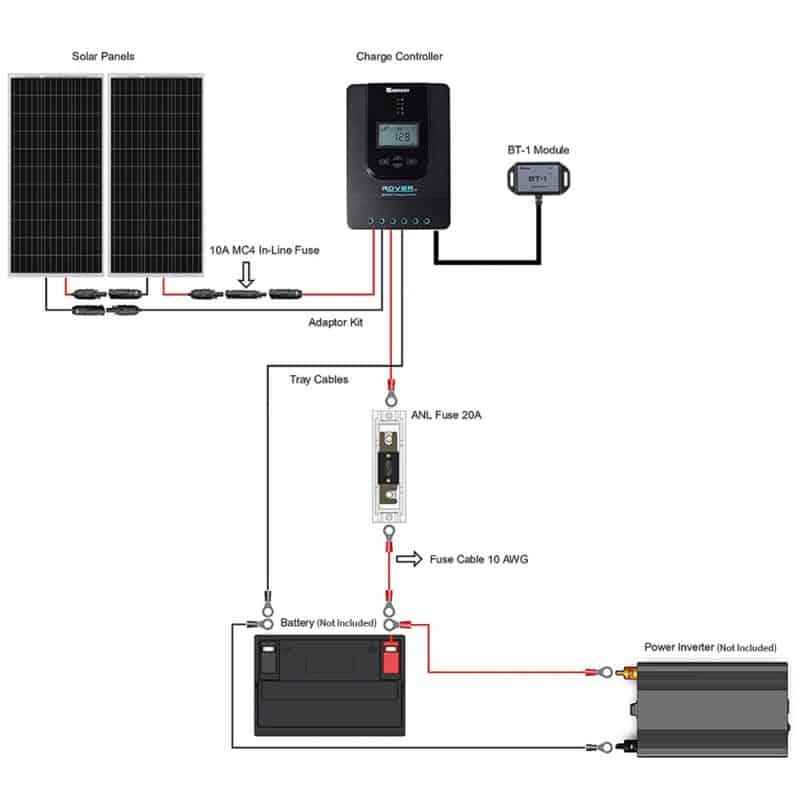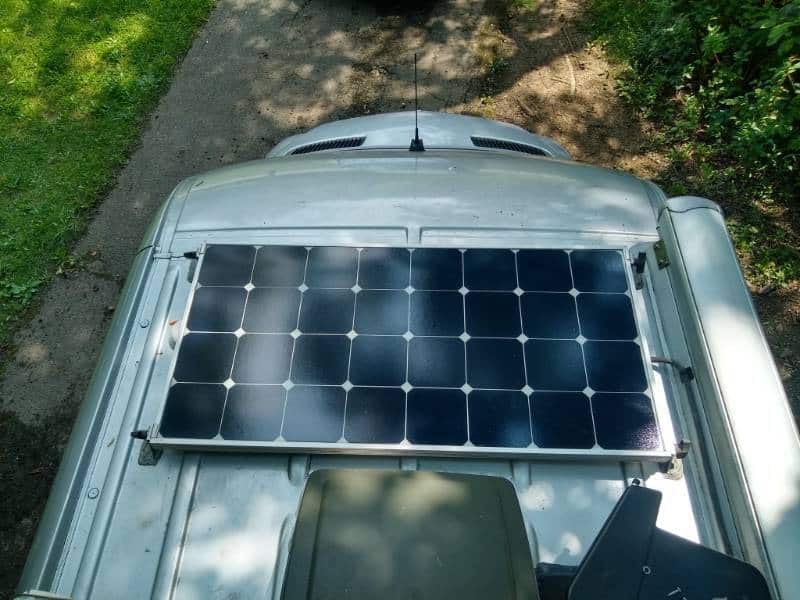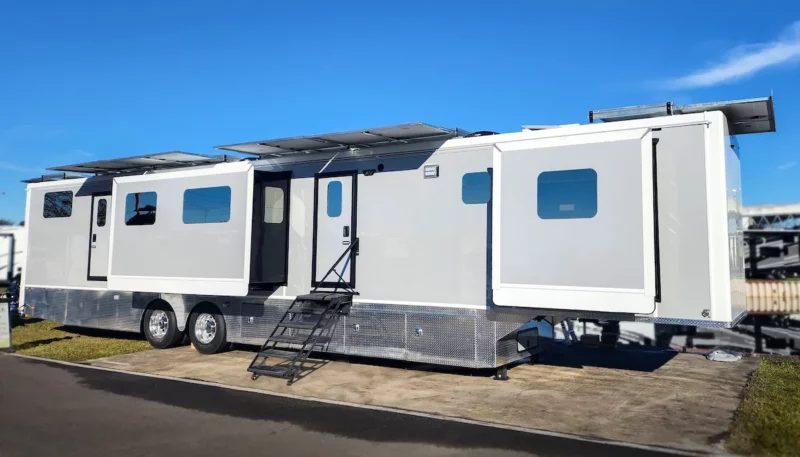The cost of an RV solar power system ranges from $200 from a barebones 100W solar suitcase to $10,000+ for a custom off-grid motorhome.
On average, adding an auxiliary 200W solar charging system to your RV will cost about $800 in materials. Estimate twice that ($1,600) for a professional installation.
As systems get larger, the price of the “solar power system” itself becomes a much smaller piece of the pie. You’ll spend far more on the inverter and batteries than on the solar panels themselves.
Introduction to RV Solar Power
At bare minimum, a portable solar power system consists of three main components:
- Solar panel[s]: Generates electrical energy
- Charge controller: Regulates electrical energy
- Battery: Stores electrical energy

How Many Solar Panels Do I Need For My RV?
This depends on how many appliances you run on a daily basis plus what type of battery you’re using.
Let’s give a simple breakdown of required panels by usage:
- 100 watts: Supplementary use only
- 200 watts: Light use (lights, fans, basic electronics)
- 400-800 watts: Moderate use (all of the above plus common appliances such as coffee maker, blender, television, crock pot – but only one at a time!)
- 1000+ watts: Heavy use (all of the above, set up to work even in cloudy weather or in the shade.)
For a better estimate of your required battery life, check out this EZ Battery Life Calculator.

How Much Does It Cost to Install Solar Panels on an RV?
The cost of an RV solar power system is largely determined by three factors:
- Wattage: The larger the appliance you wish to operate off-grid, the more panels you’ll need.
- Battery Bank: Larger solar systems need extra batteries to store extra energy.
- Installation: Custom rooftop installations will cost more than simple plug ‘n play solar suitcases.
In this list, wattage refers to the size of the solar panel array, not any associated inverter.
Dirt Cheap (<200 Watts)
The cheapest, simplest option is a self-contained solar suitcase that connects directly to your battery or solar-prep port.
A 100W solar suitcase for an RV can be purchased for as little as $200. No extra components are required. Keep things simple for an easy RV solar charging system.
Cheaper (200-400 Watts)
If you’re only looking for additional battery life, you can get by with a 100-200 watt solar system. On average, adding an auxiliary 200W solar charging system to your RV will cost about $800 in materials.
- 2 x 100W solar panels: $500
- 1 x 15A solar charge controller: $100
- Wire, connectors, hardware, etc: $200
A self-contained solar suitcase will cost about half as much.
No extra components are required. However, most RV owners will also add an additional battery, which costs about $200 for a deep-cycle AGM battery or $700 for a deep-cycle lithium battery.
Somewhat Affordable (400-800 Watts)
A 400W solar power system costs roughly twice as much as a 200W system. Therefore, adding an auxiliary 400W solar charging system to your RV will cost about $1,600 in materials.
However, to take advantage of the system’s capacity, you’ll likely want to add additional batteries and an inverter. This can easily double or triple your total cost. Therefore, a more realistic estimate for the total upgrade is $3,000 or more in materials.
Expensive (800-1,500 Watts)
Upgrading to a large RV solar power system usually means re-doing most of your electrical system. You’ll likely need a new converter/charger, plus three or four $1000 LiFePO4 batteries, a $2,000 3,000-watt pure sine wave inverter, $600 in wiring and protective components, a $300 MPPT controller … and we haven’t even got to the panels yet.
Therefore, a more realistic estimate for the total upgrade is $6,000 or more in materials.
However, this is required if you want to run your AC/DC refrigerator, microwave, and other large appliances off-grid for extended periods.
Outlandish (>1,500 Watts)
If you’re considering a solar power system with 1,500 watts of solar panel capacity or greater, then you’re really shooting for the stars! There’s no reason you can do it, provided your rig is big enough to handle all the weight.
One time, at an RV show, I walked through a custom-made SpaceCraft Custom Manufacturing RV with a toy hauler garage for a Tesla and enough solar power to charge the car. The sky’s the limit – and so is the cost. If you want to dry amp AND run two air conditioners indefinitely, you can do it, but material prices start at $20,000 and go way, way up from there!

What Kind of Battery Should I Use For My RV Solar System?
You have three choices: Lithium, flooded lead-acid, or AGM.
- Lithium batteries are the most expensive, but allow you to utilize almost 100% of the battery before requiring a recharge, meaning you also get more bang for your buck. They are also incredibly lightweight, but they can’t be recharged in freezing temperatures.
- Flooded lead-acid batteries are the cheapest option, but they are also the most likely to need maintenance. They shouldn’t be discharged past 50% state-of-charge.
- AGM batteries have a cheaper initial cost than lithium, but don’t last as long, making them more expensive in the long run. They also shouldn’t be discharged past 50% state-of-charge.
Leave a Reply